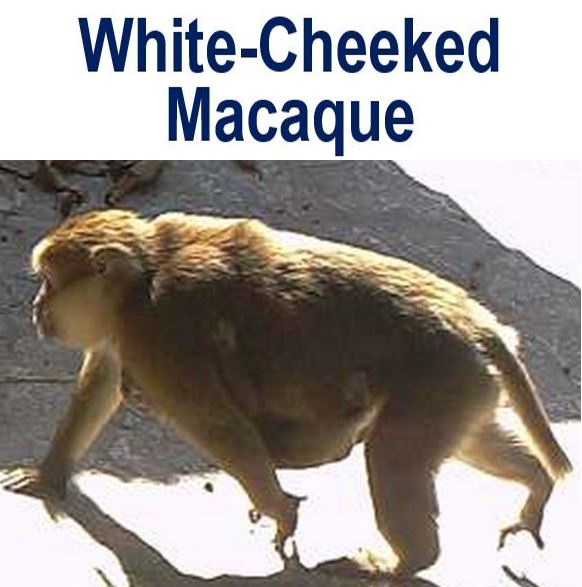A new macaque species has been discovered in the Modog state of southeastern Tibet, which has a round-shaped penis, unlike its other macaque cousins whose male organs are arrow-shaped, Chinese researchers announced earlier this week.
The new species, called Macaca leucogenys, or the “White-Cheeked Macaque”, also has some other distinguishing features that contributed towards it being classed as a new species.
Chao Zhao and Peng-Fei Fan, from the Institute of Eastern-Himalaya Biodiversity Research, Dali University, and Cheng Li, who work at the Imaging Biodiversity Expedition, all in China, wrote about their study in the American Journal of Primatology.

A White-Cheeked Macaque (Macaca leucogenys) mother with a juvenile clinging to her. (Credit: American Journal of Primatology)
The scientists came to their ‘new species’ conclusion after examining 738 photographs taken from camera traps as well as direct observations.
The authors wrote in an Abstract in the American Journal of Primatology:
“The species is distinguished from all potential sympatric macaque species (M. mulatta, M. thibetana, M. assamensis, and M. munzala) in exhibiting a suite of pelage characteristics including relatively uniform dorsal hair pattern, hairy ventral pelage, relative hairless short tail, prominent pale to white side- and chin-whiskers creating a white cheek and round facial appearance, dark facial skin on the muzzle, long and thick hairs on its neck, and a round rather than arrow-shaped male genitalia.”
Macaca leucogenys differs from other macaques in that its scrotum is dark, while those of its cousins are white.
Lives in different altitudes and habitats
The researchers found that the White Cheeked Macaque lives in a diverse set of habitats. Several were observed at 1,395 metres altitude in tropical forests, and others at 2,000 metres in a secondary evergreen forest.
A significant number were later seen in a mixed broadleaf-conifer forest about 2,700 metres above sea level.

A male Macaca leucogenys, showing white cheeks. In some individuals the tail bends towards the ground. (Image: American Journal of Primatology)
Executive Editor of the American Journal of Primatology, Paul Garber said the area has not been well explored by scientists, due partly to the political conflicts.
Chao Zhao said:
“The forest in Modog is like a nature library, and we know very little about it. Discovery of the new macaque species suggests that there may be some species that still remain undiscovered in this area.”
Reference: Cheng Li, Chao Zhao and Peng-Fei Fan. “White-cheeked macaque (Macaca leucogenys): A new macaque species from Modog, southeastern Tibet.” American Journal of Primatology. Published 25 March, 2015. DOI: 10.1002/ajp.22394.
Video – Hidden camera footage of new macaque species

